A Look at Undervalued Classroom Materials
- Cassandra Johnson
- May 22, 2018
- 4 min read
About two weeks ago my school went through a big change as we had to completely pack up everything and move to a new building on very short notice. Over the course of two days, my small, non-profit Preschool – 7th grade school completely evacuated and relocated to a new facility. And in the process, I learned a lot about a school’s environment and atmosphere.
I have long believed in the environment as the third teacher. Because of that belief, I have spent much of the past two years doing a complete overhaul of my classroom’s amenities, cleaning out old toys and bringing in more natural elements. However, as I packed up three classrooms worth of materials, I realized that we still owned more than we, or the students, actually needed. This realization was a far cry from my usual mindset of “we need this” or “we need that.” And it made me re-evaluate whether our environment matched or contradicted our vision for the classroom and our educational beliefs of how students learn.
Over the next few articles, I will be talking about how to build interactive provocation stations and create environment changes on a very limited budget. In this post, I want to begin by focusing on three under-rated materials that most teachers have access to.
Using Butcher Paper
Through my studies and books on setting up environments, I have noticed a pervasive theme of ideal vs. practical tools and set-ups: child’s cameras, child-proof mirrors, wooden lofts with colorful curtains, an endless supply of wooden puzzles, clay stations and other exotic art materials, and more. I know many teachers feel as if their classrooms never have a large enough budget to fund what the students “need.” And, oftentimes, we teachers take the financial hit and supply the classroom needs out of our own pocket. However, one thing I have learned is that setting up a provocation display or learning environment can be as inexpensive as a few rolls of paper.
I love using my whole classroom in our provocation studies. Last year, when we were studying automobiles, I used black butcher paper and laid it down on the floor throughout the classroom. The children, after guessing what the paper was for, added on the white lines, speed bumps, and tunnels (by moving the tables. Then they tested the road with their previously-created cars, made from shoe boxes and paper plates. The paper and the students’ interest, lasted a few weeks and gave us a lot of great learning opportunities.
More recently, we created “Dino Land” in our classroom. I turned a small area of the classroom (about 4 ft by 3 ft) into the interactive provocation area. First, I laid out some moss and rocks (taken from outside) plastic dinosaurs, and wooden stumps we had created from another teacher’s tree. I then added on some trees I made from butcher paper. To this I added questions on the nearby bulletin board to get students to think about what a habitat needs and what was missing from our dinosaur habitat. As we went through our study on dinosaurs, the children added water, different types of food, and even a bridge. Each day they would rearrange Dino Land to suit their play purposes and to include what we were learning about dinosaurs.
Outdated Technology
Other tools that I have come to depend on are pieces of “outdated” equipment such as the overhead projector. A lot of schools and universities are giving away their old equipment, claiming that they no longer serve any purpose. This is how we obtained two of them. From studies on light to creating homemade “movies,” my classroom’s projectors have been the focus of hours of entertainment and study. It has even served as inspiration for students to try to build their own out of flashlights, boxes, and mirrors. We may not have a traditional light table, but I would argue that our projector fulfills all of our needs for light studies.
Older cellphones and tablets are also pieces of outdated tech that can be repurposed as cameras, and I find that an email to fellow staff and parents can quickly bring in other old technology that would otherwise be discarded.
Boxes
My favorite piece of affordable material has to be the cardboard box. If you have not read the book “Not a Box,” by Antoinette Portis, go find it now. I start out each year by reading this book to my students. Then I watch the magic happen. I have had students use boxes to create cars, spaceships, forts, garbage cans, and even a toilet. While there are a multitude of ways to set up a specific provocation with boxes; however, just presenting them with loose parts works just as well.
While boxes are traditionally turned into cars and trucks, I also like to present them to my students with a building provocation. Each year I find famous and interestingly-built buildings and print out pictures of them. Then, I place these photos near my blocks. As students come to the blocks and photos, a teacher will help them explore the image by talking about the shapes and patterns they see in the building. Then, the teacher steps back to let the child create. At the culmination of our study, the teachers place boxes of all sizes and shapes out in the classroom, and along with a variety of materials such as cups, plates, blankets, Christmas lights, and tools. We then let the children try to recreate the buildings they see in the pictures or build their own. I have been amazed at the imagination that springs forth with a little preparation on the teacher’s part and a lot of effort, imagination, and teamwork from the children.
When I went through my classroom to pack up materials, I really was amazed by the sheer number of toys and items that we had never used. It was just sitting back there, untouched by the children or the teachers. What had we been using instead? “Junk” by most people’s standards, although we prefer to consider it “re-purposed” materials. My students had spent the past year stretching and growing their imaginations by giving new life to these outdated objects, from old packing boxes to unused projectors and paper. No, our classroom may not be the most stylish or well-equipped, but it does host an abundance of materials that keep the children learning and growing and creating. After all, isn’t that what a school should be for children?


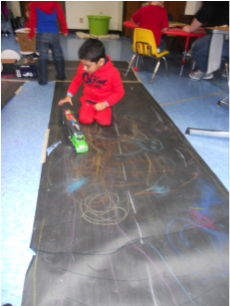

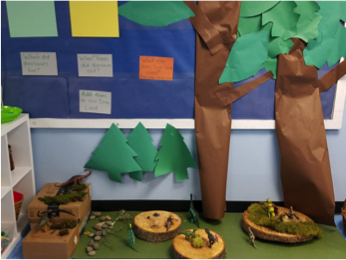
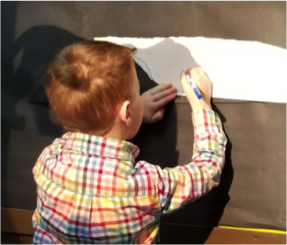



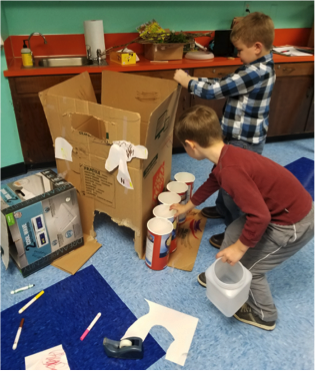

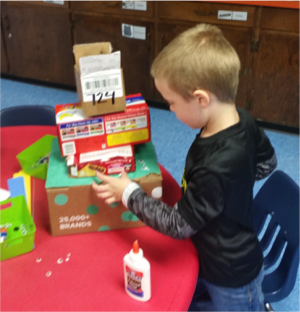






































Comments